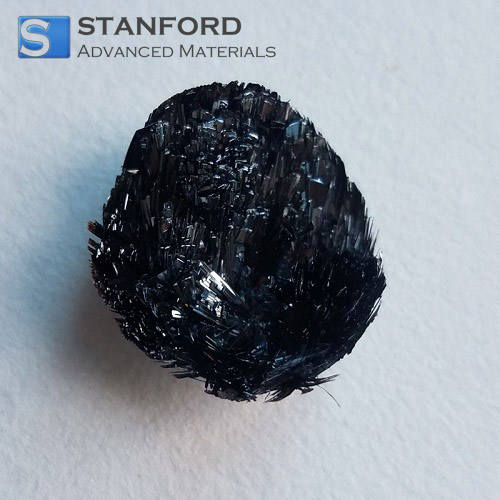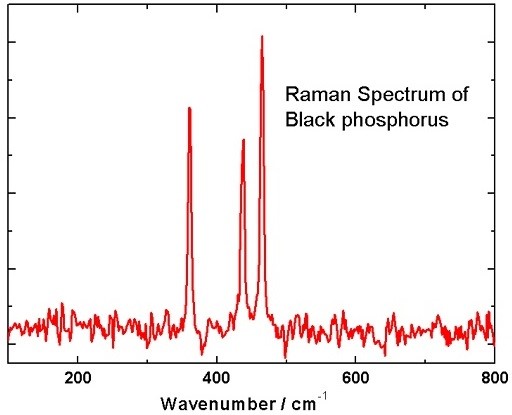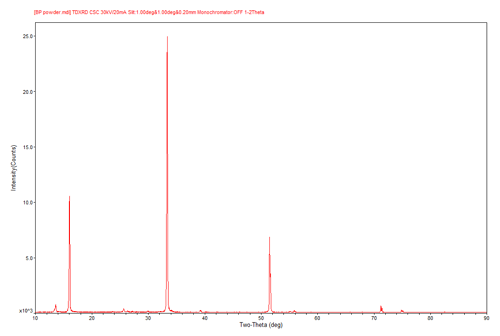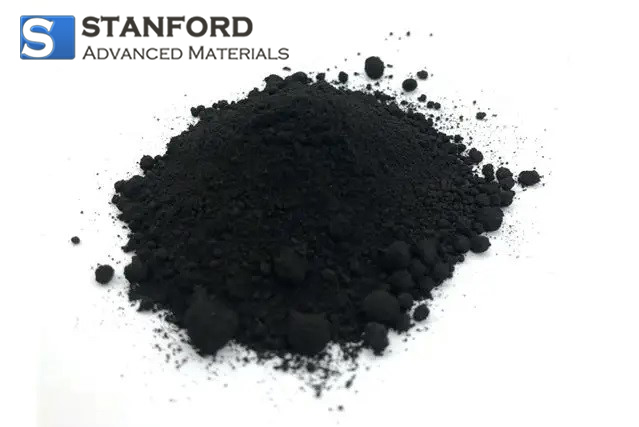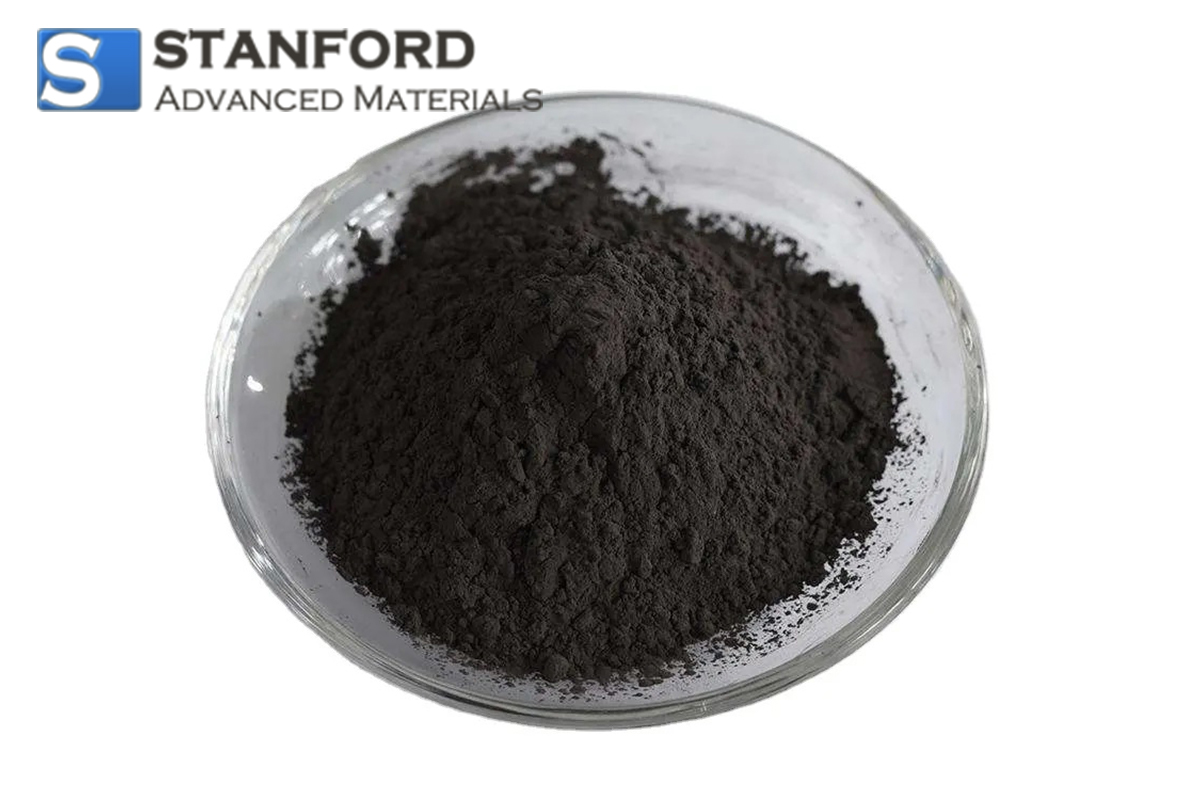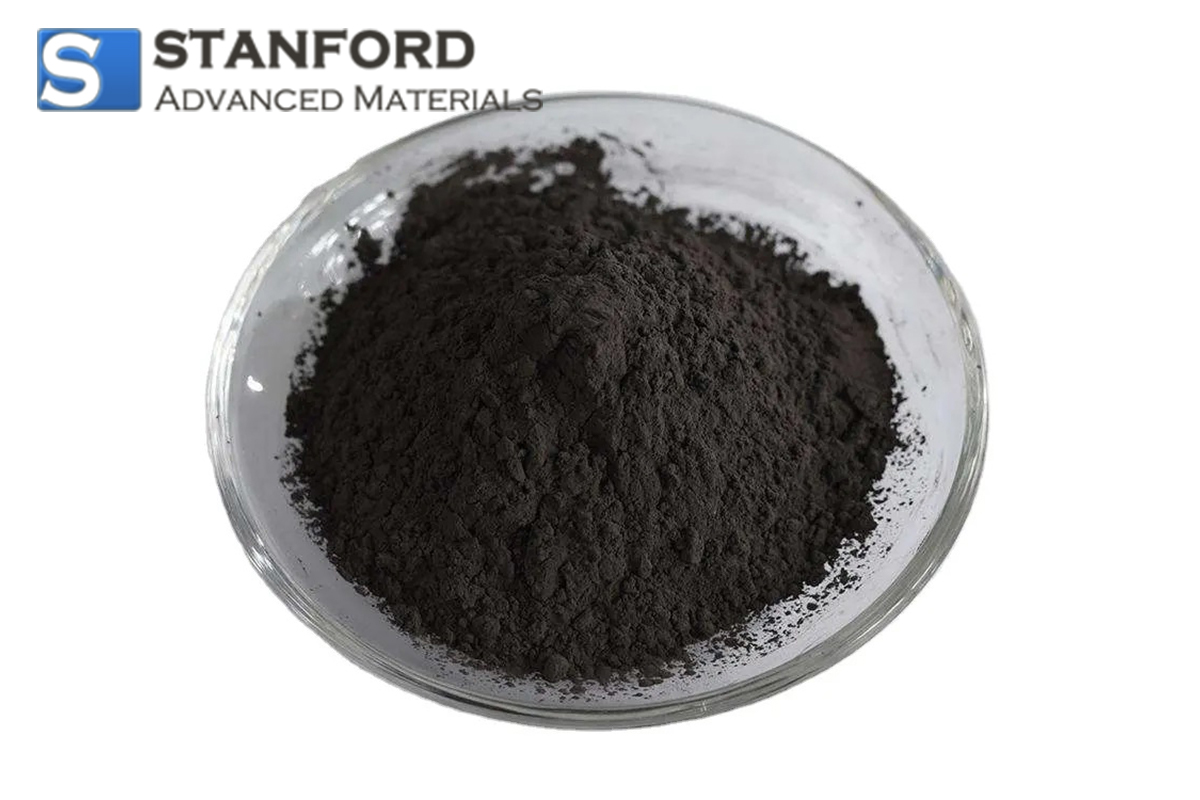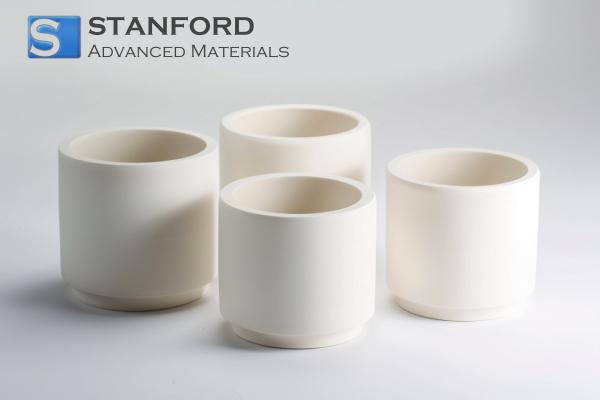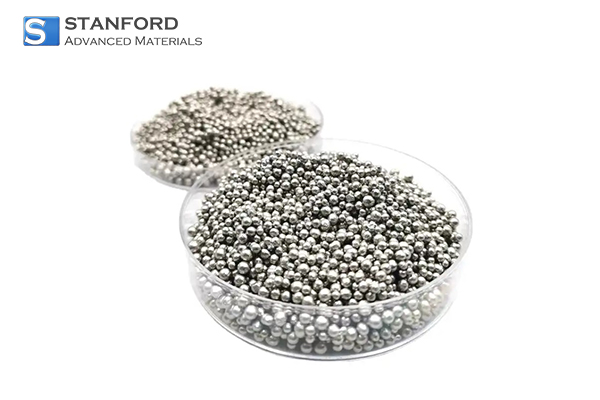SECTION 1. IDENTIFICATION
Product Name: Black Phosphorus
CAS #: 7723-14-0
Relevant identified uses of the substance: Scientific research and development
Supplier details:
Stanford Advanced Materials
E-mail: sales@samaterials.com
Tel: (949) 407-8904
Address: 23661 Birtcher Dr., Lake Forest, CA 92630 U.S.A.
SECTION 2. HAZARDS IDENTIFICATION
2.1 Classification of the substance or mixture
GHS Classification in accordance with 29 CFR 1910 (OSHA HCS)
Flammable solids (Category 2), H228
Acute aquatic toxicity (Category 3), H402
Chronic aquatic toxicity (Category 3), H412
2.2 GHS Label elements, including precautionary statements
Pictogram
Signal word Warning
Hazard statement(s)
H228 Flammable solid.
H412 Harmful to aquatic life with long lasting effects.
Precautionary statement(s)
P210 Keep away from heat/sparks/open flames/hot surfaces. No smoking.
P240 Ground/bond container and receiving equipment.
P241 Use explosion-proof electrical/ ventilating/ lighting/ equipment.P273 Avoid release to the environment.
P280 Wear protective gloves/ eye protection/ face protection.
P370 + P378 In case of fire: Use dry sand, dry chemical or alcohol-resistant foam to
extinguish.
P501 Dispose of contents/ container to an approved waste disposal plant.
2.3 Hazards not otherwise classified (HNOC) or not covered by GHS - none
SECTION 3. COMPOSITION/INFORMATION ON INGREDIENTS
3.1 Substances
Synonyms : Phosphorus
Formula : P
Molecular weight : 30.97 g/mol
CAS-No. : 7723-14-0
EC-No. : 231-768-7
Index-No. : 015-002-00-7
Hazardous components
Component Classification Concentration
Red phosphorus
Flam. Sol. 2; Aquatic Acute 3;
Aquatic Chronic 3; H228,
H412
<= 100 %
SECTION 4. FIRST AID MEASURES
4.1 Description of first aid measures
General advice
Consult a physician. Show this safety data sheet to the doctor in attendance.Move out of dangerous
area.
If inhaled
If breathed in, move person into fresh air. If not breathing, give artificial respiration. Consult a
physician.
In case of skin contact
Wash off with soap and plenty of water. Consult a physician.
In case of eye contact
Flush eyes with water as a precaution.
If swallowed
Do NOT induce vomiting. Never give anything by mouth to an unconscious person. Rinse mouth with
water. Consult a
physician.
4.2 Most important symptoms and effects, both acute and delayed
The most important known symptoms and effects are described in the labelling (see section 2.2)
and/or in section 11
4.3 Indication of any immediate medical attention and special treatment needed
No data available
SECTION 5. FIREFIGHTING MEASURES
5.1 Extinguishing mediaSuitable extinguishing media
Use water spray, alcohol-resistant foam, dry chemical or carbon dioxide.
5.2 Special hazards arising from the substance or mixture
Oxides of phosphorus
5.3 Advice for firefighters
Wear self-contained breathing apparatus for firefighting if necessary.
5.4 Further information
Use water spray to cool unopened containers.
SECTION 6. ACCIDENTAL RELEASE MEASURES
6.1 Personal precautions, protective equipment and emergency procedures
Avoid dust formation. Avoid breathing Vapors, mist or gas. Ensure adequate ventilation. Remove all
sources of
ignition. Evacuate personnel to safe areas.
For personal protection see section 8.
6.2 Environmental precautions
Prevent further leakage or spillage if safe to do so. Do not let product enter drains. Discharge into the
environment
must be avoided.
6.3 Methods and materials for containment and cleaning up
Sweep up and shovel. Contain spillage, and then collect with an electrically protected vacuum cleaner
or by wetbrushing
and place in container for disposal according to local regulations (see section 13). Keep in suitable,
closed
containers for disposal. Contain spillage, pick up with an electrically protected vacuum cleaner or by
wet-brushing
and transfer to a container for disposal according to local regulations (see section 13).
6.4 Reference to other sections
For disposal see section 13.
SECTION 7. HANDLING AND STORAGE
7.1 Precautions for safe handling
Avoid formation of dust and aerosols.Further processing of solid materials may result in the formation
of combustible
dusts. The potential for combustible dust formation should be taken into consideration before
additional processing
occurs.
Provide appropriate exhaust ventilation at places where dust is formed.Keep away from sources of
ignition - No
smoking.Take measures to prevent the build up of electrostatic charge.
For precautions see section 2.2.
7.2 Conditions for safe storage, including any incompatibilities
Keep container tightly closed in a dry and well-ventilated place.
Air-, heat-, and moisture-sensitive. Keep in a dry place. Handle and store under inert gas.
Storage class (TRGS 510): Flammable solid hazardous materials
7.3 Specific end use(s)
Apart from the uses mentioned in section 1.2 no other specific uses are stipulated
SECTION 8. EXPOSURE CONTROLS/PERSONAL PROTECTION
8.1 Control parameters
Components with workplace control parameters
Component CAS-No. Value Control
parameters
Basis
Red phosphorus 7723-14-0 TWA 0.100000
mg/m3
USA. Occupational Exposure Limits
(OSHA) - Table Z-1 Limits for Air
Contaminants
TWA 0.1 mg/m3 USA. Occupational Exposure Limits
(OSHA) - Table Z-1 Limits for Air
Contaminants
TWA 0.100000
mg/m3
USA. NIOSH Recommended
Exposure Limits
TWA 0.1 mg/m3 USA. NIOSH Recommended
Exposure Limits
8.2 Exposure controls
Appropriate engineering controls
Handle in accordance with good industrial hygiene and safety practice. Wash hands before breaks
and at the end of
workday.
Personal protective equipment
Eye/face protection
Safety glasses with side-shields conforming to EN166 Use equipment for eye protection tested and
approved
under appropriate government standards such as NIOSH (US) or EN 166(EU).
Skin protection
Handle with gloves. Gloves must be inspected prior to use. Use proper glove removal technique
(without
touching glove's outer surface) to avoid skin contact with this product. Dispose of contaminated gloves
after
use in accordance with applicable laws and good laboratory practices. Wash and dry hands.
Body Protection
Flame retardant antistatic protective clothing., The type of protective equipment must be selected
according to
the concentration and amount of the dangerous substance at the specific workplace.
Respiratory protection
Where risk assessment shows air-purifying respirators are appropriate use a full-face particle
respirator type
N100 (US) or type P3 (EN 143) respirator cartridges as a backup to engineering controls. If the
respirator is the
sole means of protection, use a full-face supplied air respirator. Use respirators and components
tested and
approved under appropriate government standards such as NIOSH (US) or CEN (EU).
Control of environmental exposure
Prevent further leakage or spillage if safe to do so. Do not let product enter drains. Discharge into the
environment must be avoided.
SECTION 9. PHYSICAL AND CHEMICAL PROPERTIES
9.1 Information on basic physical and chemical properties
a) Appearance Form: crystalline
Colour: grey
b) Odor No data available
c) Odor Threshold No data available
d) pH ca.3 at 10 g/l at 37 °C (99 °F)
e) Melting point/freezing
point
Melting point/range: 416 °C (781 °F)
f) Initial boiling point and
boiling range
No data available
g) Flash point N/A
h) Evaporation rate No data available
i) Flammability (solid, gas) The substance or mixture is a flammable solid with the category 2.
j) Upper/lower
flammability or
explosive limits
No data available
k) Vapor pressure 0.04 hPa (0.03 mmHg) at 21 °C (70 °F)
l) Vapor density No data available
m) Relative density 2.340 g/cm3
n) Water solubility 0.3 g/l at 20 °C (68 °F) - slightly soluble
o) Partition coefficient: noctanol/
water
No data available
p) Auto-ignition
temperature
> 300 °C (> 572 °F) at 1,013 hPa (760 mmHg)
q) Decomposition
temperature
No data available
r) Viscosity No data available
s) Explosive properties No data available
t) Oxidizing properties No data available
9.2 Other safety information
No data available
SECTION 10. STABILITY AND REACTIVITY
10.1 Reactivity
No data available
10.2 Chemical stability
Stable under recommended storage conditions.
10.3 Possibility of hazardous reactions
No data available
10.4 Conditions to avoid
Heat
Heat, flames and sparks.10.5 Incompatible materials
Sulphur compounds, Oxidizing agents, Copper, Oxygen, Bases
10.6 Hazardous decomposition products
Other decomposition products - No data available
In the event of fire: see section 5
SECTION 11. TOXICOLOGICAL INFORMATION
11.1 Information on toxicological effects
Acute toxicity
LD50 Oral - Rat - female - > 15,000 mg/kg
(OECD Test Guideline 401)
Inhalation: No data available
Dermal: No data available
No data available
Skin corrosion/irritation
Skin - Rabbit
Result: No skin irritation - 24 h
(OECD Test Guideline 404)
Serious eye damage/eye irritation
Eyes - Rabbit
Result: No eye irritation - 24 h
(OECD Test Guideline 405)
Respiratory or skin sensitisation
Buehler Test - Guinea pig
Result: Does not cause skin sensitisation.
(OECD Test Guideline 406)
Germ cell mutagenicity
Hamster
fibroblast
Result: negative
Carcinogenicity
IARC: No component of this product present at levels greater than or equal to 0.1% is identified as
probable, possible or confirmed human carcinogen by IARC.
NTP: No component of this product present at levels greater than or equal to 0.1% is identified as a
known or anticipated carcinogen by NTP.
OSHA: No component of this product present at levels greater than or equal to 0.1% is identified as a
carcinogen or potential carcinogen by OSHA.
Reproductive toxicity
No data available
No data available
Specific target organ toxicity - single exposure
No data available
Specific target organ toxicity - repeated exposure
No data available
Aspiration hazard
No data available
Additional Information
RTECS: Not available
Depending on the intensity and duration of exposure, effects may vary from mild irritation to severe
destruction of
tissue., Vomiting, Diarrhoea, To the best of our knowledge, the chemical, physical, and toxicological
properties havenot been thoroughly investigated.
SECTION 12. ECOLOGICAL INFORMATION
12.1 Toxicity
Toxicity to fish static test LC50 - Danio rerio (zebra fish) - 33.2 mg/l - 96 h
(OECD Test Guideline 203)
Toxicity to daphnia and
other aquatic
invertebrates
static test EC50 - Daphnia magna (Water flea) - 10.5 mg/l - 48 h
(OECD Test Guideline 202)
Toxicity to algae static test EC50 - Desmodesmus subspicatus (green algae) - 18.3 mg/l - 72 h
(OECD Test Guideline 201)
Toxicity to bacteria Respiration inhibition EC50 - Sludge Treatment - > 1,000 mg/l - 3 h
(OECD Test Guideline 209)
12.2 Persistence and degradability
No data available
12.3 Bioaccumulative potential
No data available
12.4 Mobility in soil
No data available
12.5 Results of PBT and vPvB assessment
PBT/vPvB assessment not available as chemical safety assessment not required/not conducted
12.6 Other adverse effects
An environmental hazard cannot be excluded in the event of unprofessional handling or disposal.
Harmful to aquatic life with long lasting effects.
SECTION 13. DISPOSAL CONSIDERATIONS
13.1 Waste treatment methods
Product
Burn in a chemical incinerator equipped with an afterburner and scrubber but exert extra care in
igniting as this
material is highly flammable. Offer surplus and non-recyclable solutions to a licensed disposal
company.
Contaminated packaging
Dispose of as unused product.
SECTION 14. TRANSPORT INFORMATION
DOT (US)
UN number: 1338 Class: 4.1 Packing group: III
Proper shipping name: Phosphorus, amorphous
Reportable Quantity (RQ): 1 lbs
Poison Inhalation Hazard: No
IMDG
UN number: 1338 Class: 4.1 Packing group: III EMS-No: F-A, S-G
Proper shipping name: PHOSPHORUS, AMORPHOUS
Marine pollutant:yesIATA
UN number: 1338 Class: 4.1 Packing group: III
Proper shipping name: Phosphorus, amorphous
SECTION 15. REGULATORY INFORMATION
SARA 302 Components
The following components are subject to reporting levels established by SARA Title III, Section 302:
Red phosphorus
CAS-No.
7723-14-0
Revision Date
1991-07-01
SARA 313 Components
The following components are subject to reporting levels established by SARA Title III, Section 313:
Red phosphorus
CAS-No.
7723-14-0
Revision Date
1991-07-01
SARA 311/312 Hazards
Fire Hazard
Massachusetts Right To Know Components
Red phosphorus
CAS-No.
7723-14-0
Revision Date
1991-07-01
Pennsylvania Right To Know Components
Red phosphorus
CAS-No.
7723-14-0
Revision Date
1991-07-01
New Jersey Right To Know Components
Red phosphorus
CAS-No.
7723-14-0
Revision Date
1991-07-01
California Prop. 65 Components
This product does not contain any chemicals known to State of California to cause cancer, birth
defects, or any other
reproductive harm.
SECTION 16. OTHER INFORMATION
Safety Data Sheet according to Regulation (EC) No. 1907/2006 (REACH). The above information is
believed to be correct but does not purport to be all inclusive and shall be used only as a guide. The
information in this document is based on the present state of our knowledge and is applicable to the
product with regard to appropriate safety precautions. It does not represent any guarantee of theproperties of the product.


 English
English Española
Española Deutsch
Deutsch Français
Français Italiano
Italiano